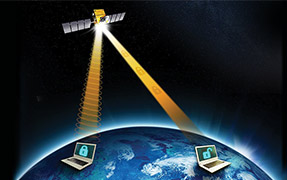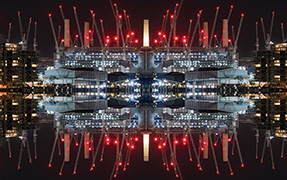#FacesofPhotonics: Senior Test Engineer Junwei Meng

SPIE Member Junwei Meng recently joined II-VI Incorporated in Dallas as a senior test engineer, working on the R&D side of testing infrastructure for photo detectors, sensors, vertical cavity surface-emitting lasers (VCSELs), and other technologies. “I am really enjoying this job,” says Junwei. “We make technology for a variety of applications. The sensors that go through our test system will end up being used in cellphones for facial recognition, for example, and in cars to improve autonomous vehicles."
Before joining the II-VI Incorporated team, he was a research assistant at the University of New Mexico (UNM). Here, Junwei was part of a team working on a DARPA-funded research project: developing a solid-state optical cryocooler with the hopes of creating a device that could cool the NIST optical clock, which would positively affect clock accuracy throughout the world. This is only one of many applications a cooler like this could have, notes Junwei. Other applications which require a cryogenic temperature and vibration-free environment, such as space-born infrared imaging sensors and gamma-ray detectors, would also benefit from this cooler. “We would use Yb:YLF crystals as our cooling material and shine very high-power infrared lasers on the crystal, cool it to sub-100 Kelvin (K), then attach our specially-designed transparent thermal link to the cooling crystal. It was a process that came with many engineering challenges!”
Learn more about Junwei’s story in this SPIE Faces of Photonics interview!

PHYSICS GANG: The Mansoor Sheik-Bahae Research Group at UNM. Junwei is pictured bottom right.
1. How did you become interested in the optics and photonics field? Was there a specific person who inspired you?
I was born in a tiny, impoverished village in northeast China. The town is very remote – it is in the forested mountainside, and most people in the village make their living chopping down trees. My elementary school was constructed from World War II storage boxes that were built by the Japanese. The classroom was very dark. Only one small light bulb hung from the ceiling.
I still remember that evening 20 years ago when my Dad came to pick me up from school. It was the middle of the winter, so the sky was already very dark. Suddenly the light bulb burnt out, the room become pitch black, and all the kids started screaming. My dad turned on his flashlight, took out the burnt bulb, and started to rotate and shake it — I later understood he was trying to reconnect the filament. Once done, he put the bulb back in the holder and it lit the room again!
That was amazing to me. I told him, "I want to learn how to do this; next time let me do it." He was laughed and said, “Of course.” From that moment on, I was interested in anything related to physics or electrical systems. Later on, my father encouraged me to attend Changchun University of Science and Technology, one of the best optical-electrical engineering institutes in China. After getting a Bachelor of Science here, I went to Delaware State University for a Master of Science in applied optics, and then to UNM for a PhD in optical sciences and engineering.
2. Explain what you do at your job. How does your work impact society?
My job involves research and development of new test infrastructure for VCSELs, photo detectors, and sensors, and our team collaborates intensively with the R&D, production, and quality teams. We work together to create one-of-a-kind test systems. Actually, the test system developed at this company is known as one of the best VCSEL and photo detector test systems in the United States! The VCSEL lasers that go through our test systems will end up being used in data centers, in applications such as 3D cameras, and more.
At II-VI, we are also improving the applicability of semiconductor lasers. Our teams work to integrate lasers into everyday systems, providing the possibility for all people to experience the benefits of lasers in their daily lives.

ALL SYSTEMS GO!: Junwei and colleagues work on a project in the lab at UNM.
3. What book has impacted your professional life the most? Your personal life? Why?
The book that has impacted my professional life the most is A Message to Garcia by Elbert Hubbard. I read this essay during high school – it was the Chinese-translated edition. The protagonist reminds me of myself when I entered the academic part of my life, because getting the problem solved and finding a better solution was — and is always — my goal. Never give up, go forward – even just a tiny step forward everyday helped me build my professional life to where it is today. You can always gather knowledge, but perseverance and confidence must be learned slowly throughout your life.
4. What is your advice to others in the STEM community?
STEM is not an easy path to take. It is a challenging area, and it takes quite some time to attain the necessary knowledge to excel. It feels like today’s world does not have that kind of patience. I will say this though: we, as the STEM community, should take more time to educate the world, to let them know that even the top scientists and engineers need a lot of support from their community, families, and friends. Working in the STEM field takes patience; things do not just happen from quick meetings and conversations. We must be intensely focused, and this is why it is important to have support.
| Enjoy this article? Get similar news in your inbox |
|



